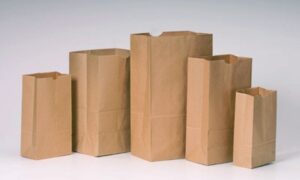From 2022 to 2027, the global QR code labels market is expected to grow at an annual rate of 8.9%, from US$ 1.3 billion in 2022 to US$ 2.1 billion in 2027.
Product labeling, which is just as crucial as packaging in terms of influencing consumer purchase behavior, has also become increasingly vital. QR code labels’ 2D nature and machine (mobile device) readability continue to emphasize their strong adoption potential. Apart from food and beverage, the healthcare, pharmaceutical, and personal care businesses have recently adapted to the barcode-to-QR code paradigm change.
As the importance of addressing major industrial consequences of product and label counterfeiting grows, operators in numerous industrial areas are increasingly opting for QR code labels over their traditional counterpart, the barcode.
Exploring a broader use in the food and beverage industry, which accounts for a significant revenue share in the QR code labels market, the QR code labels easily link customers to product authentication information, which is otherwise a challenge in labels with limited space.
Top Trends Influencing QR Code Labels Manufacturers’ Strategic Activities –
• QR code labels that are waterproof
• QR code labels that are specifically created for packaged seafood goods
Wholesale and retail distributors are putting QR code labels on alcoholic beverages in large numbers.
The bulk of established companies that produce QR code labels is focusing on waterproof QR code labels that can survive harsh weather conditions. Another prominent trend in the QR code label landscape noted in recent years is the growing use of QR code labels in seafood products and liquor bottles.
As part of a new effort to adapt to their electronic tracking and monitoring systems, Russian wholesalers and retailers dealing in alcoholic beverages have begun mass QR code labeling for all liquor bottles. While this tendency currently applies to both premium spirits and beer, it is expected to help the Russian alcohol business keep track of exports, imports, and sales in addition to production, distribution, and sales.
Manufacturers of QR code labels located in Australia have been working to track seafood and meat goods during transit, allowing consumers to stay informed about the products’ history and current state.































